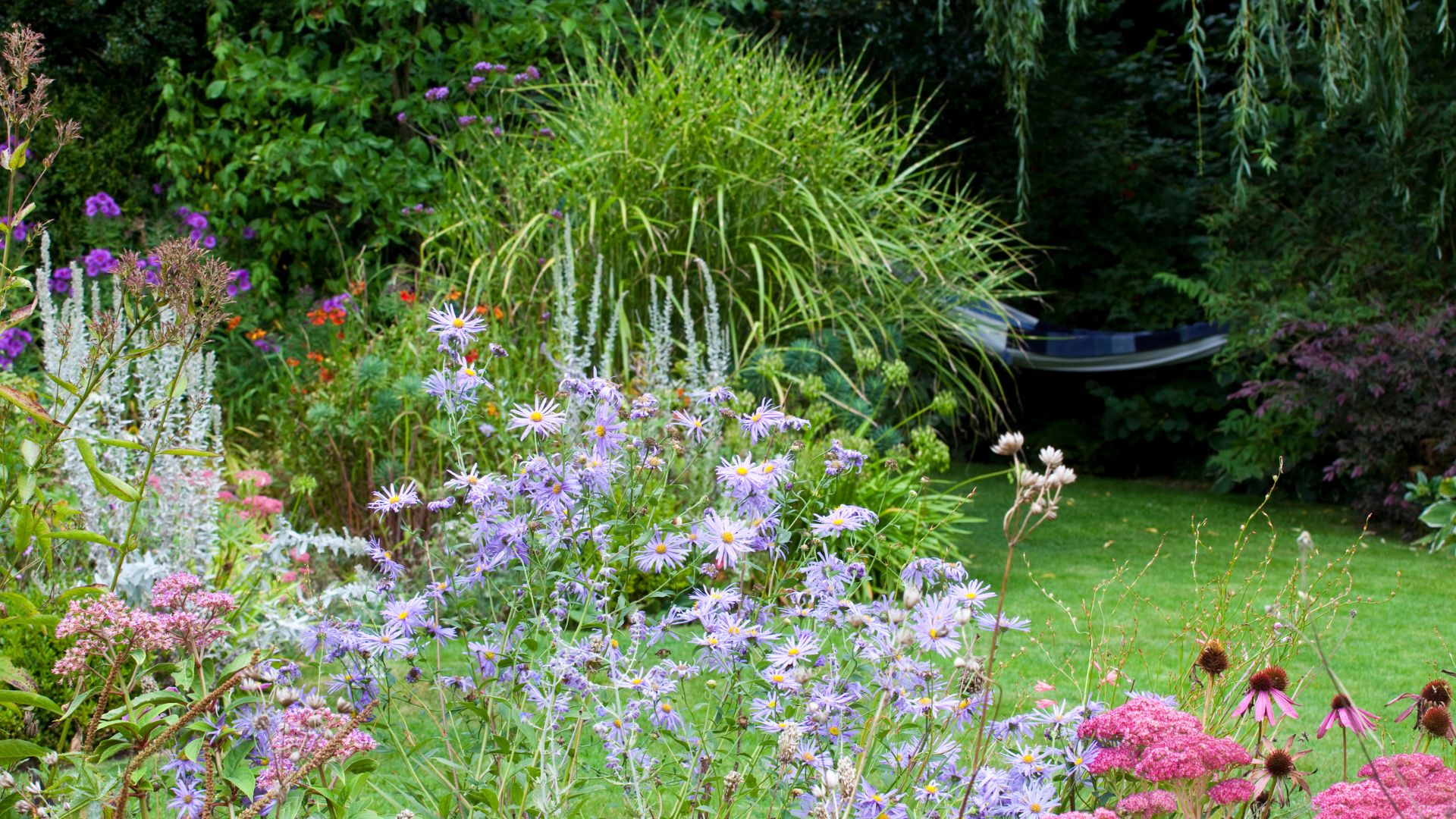Sarah Raven reveals the benefits of embracing the 'dynamic' new Mosaic Gardening trend
Professional gardener Sarah Raven celebrates the advantages of adopting a ‘mosaic’ approach to garden maintenance


You've probably heard of the rewilding trend by now, and whilst it's not going away anytime soon there's a new, more refined low-maintenance gardening style gaining popularity.
We are of course talking about Mosaic gardening, a trend that blends everything we love about rewilding with the stylistic control most gardeners prefer to have.
With all the evolving garden trends it's important to find ones that work for your tastes and your garden's capabilities. Whilst it's great to let go and fully give over your garden to the wilderness, it can be more realistic to have a little more control over which sustainable garden ideas you want to incorporate and which you don't.
So if you're a green thumb who still wants a tidy frequently mown lawn amongst the wildflower garden borders and beds, the Mosaic gardening trend is for you.
What is Mosaic gardening?
So what is Mosaic gardening and what's different from the rewilding trend? Luckily, professional gardener Sarah Raven posted about the trend on her Instagram after discussing it on her gardening podcast, Grow, Cook, Eat, Arrange with Sarah Raven & Friends.
She says, "Adopting a ‘mosaic’ approach to garden maintenance will enable biodiversity to truly prosper and thrive in your outdoor space. More than any field or meadow, ‘mosaic gardening’ allows you to create specific areas with biodiversity in mind."
In short, mosaic gardening is here to welcome wildlife into your garden whilst giving you the chance to add your flair too.
Sign up for the woman&home newsletter
Sign up to our free daily email for the latest royal and entertainment news, interesting opinion, expert advice on styling and beauty trends, and no-nonsense guides to the health and wellness questions you want answered.
Where rewilding depends on you handing over the reins of your garden and what it grows to nature, mosaic gardening keeps you in the driving seat as you decide what plants you add and what structures will work for your garden.
Whether you're looking for alluring plants to liven up your garden or are looking to start succession planting, this trend can be implemented no matter what your goal is.
A post shared by Sarah Raven (@sarahravensgarden)
A photo posted by on
"Adding more plants, flowers, and structures will enable more habitats, and lead to greater biodiversity. This concept is a far cry from just letting shrubs, plants and weeds run riot," explains Sarah.
"Mosaic gardening is having different levels of disturbance in your garden. The more you think mosaic and introduce different structures, different plants, flowers and shrubs, the more you are creating new habitats which leads to greater biodiversity. Much more than a field or a meadow would."
How can you incorporate Mosaic gardening into your space?
Now you know what the trend is all about, how can you make it work for your garden? Discussing the topic on her podcast with guest, professional gardener Charlie Harpur, Sarah asked about the importance of having a plan when it comes to a mosaic gardening approach.
"You need that kind of disturbance to keep the whole thing sort of dynamic and get that variation," says Charlie. "Maximum biodiversity is the aim. There was a focus on plants that weren't sterile hybrids, plants that can feed themselves and be dynamic, we don't want things that are going to sort of sit there and not offer nectar and pollen to visiting insects. So I guess there was a lot of thought into more 'natural' plants."
Choosing plants that are going to provide for your garden is an important step in mosaic gardening, as it will mean low-maintenance sustainability that will welcome wildlife without you having to continually interfere.
Starting with these types of plants can be a great way to transform your garden on a budget as they will help your other plants thrive without having to invest in as much food or fertiliser.

Another way you can mosaic your garden is by choosing to weed in certain sections of your garden that actually need to be cleared. Talking on the podcast, Sarah and her guest discuss how only weeding certain areas will allow for more sensitive plants to grow.
Re-naming it grazing, they say this selective 'grazing' stops weeds from smothering other plants which would be bad for plant biodiversity. Similar to how you get rid of weeds in your grass!
Sarah also points out that it doesn't have to be a solo effort, an entire street of houses can create a mosaic garden. "One person has the pond, one person has the dry and one person the shady and another the wet," she says.
Her guest Charlie summarises it wonderfully, "Its a wider mosaic and thinking about not just your isolated situation is really important. Even if you just have a balcony, it's an important stepping stone that connects to next door and the park down the road. It's how it all adds up, think about the connectivity and what you offer as a mosaic piece."
Whilst this trend is an addition to rewilding, it's important to know that mosaic gardening is about tending to a garden still and creating beauty as well as the sensory experience becoming enhanced.

Emily joined woman&home as a staff writer after finishing her MA in Magazine Journalism from City University in 2023. After writing various health and news content, she now specialises in lifestyle, covering unique cleaning hacks, gardening how-tos, and everything to help your houseplants thrive.
-
 Unforgettable date ideas to make a great first impression or rekindle romance
Unforgettable date ideas to make a great first impression or rekindle romanceForget the same old first date formula - these unforgettable date ideas will leave them thinking about you long after you go home
By Natalie Denton Published
-
 Butter yellow might be the colour of the season, but Amal Clooney is making me want to try sunshine shades
Butter yellow might be the colour of the season, but Amal Clooney is making me want to try sunshine shadesSpark some joy by adding some statement yellow pieces to your wardrobe just in time for summer
By Matilda Stanley Published